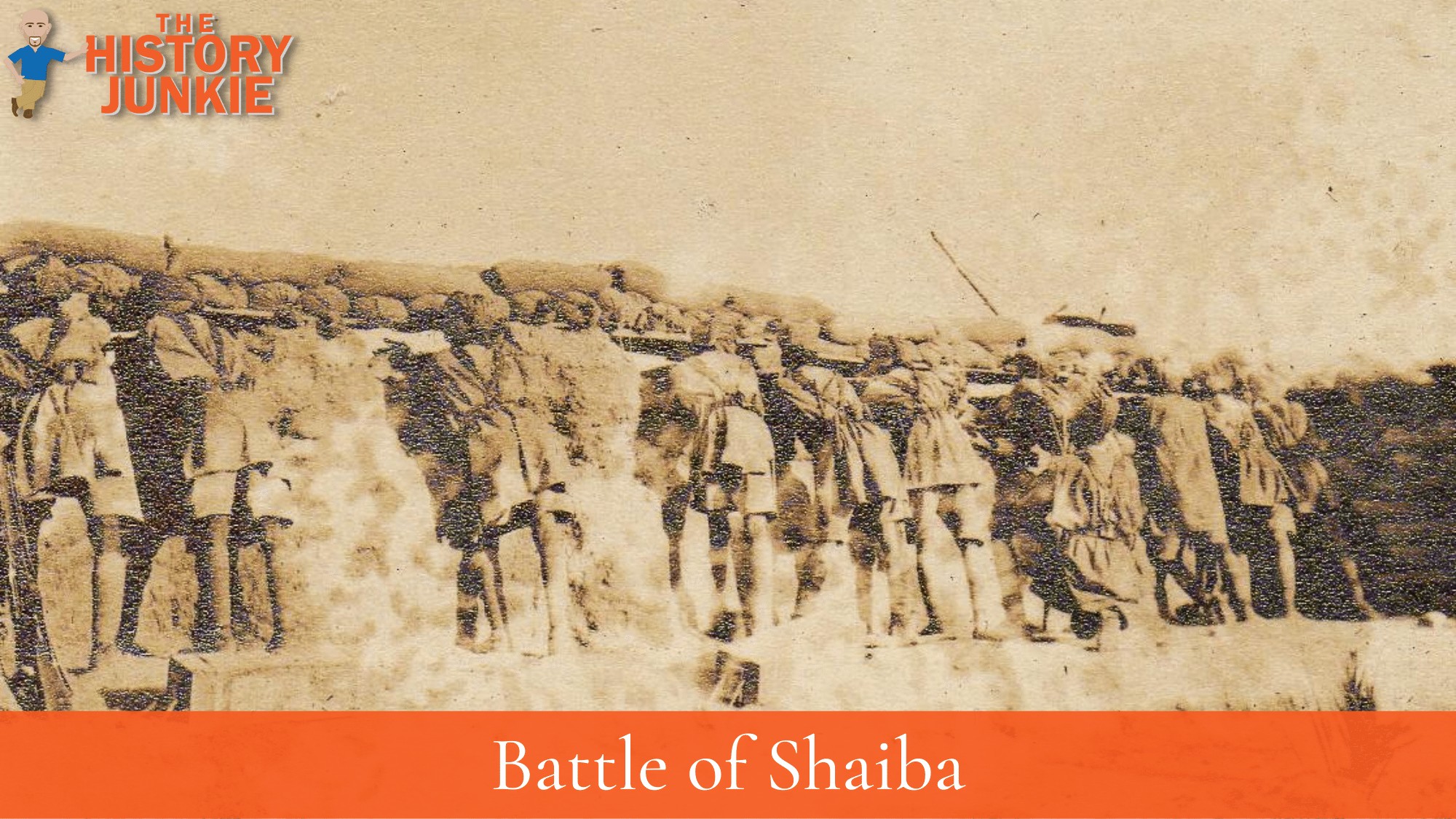After the British victories at Basra in November and Qurna in December 1914, Turkish forces under Colonel Subhi Bey were driven back several miles north up the Tigris to Ruta. The next fight during the Mesopotamian Campaign would be known as the Battle of Shaiba.

Although a British-Indian raid of 3,000 troops on January 21, 1915, failed, Subhi's lines remained static in anticipation of a Turkish offensive in April.
A second Turkish force crossed the Tigris into neutral Persia, targeting the British oil pumping station at Ahwaz.
Jump to:
Meanwhile, a third Turkish force of 12,000 men from the Constantinople Fire Brigade and 10,000-15,000 Arabs assembled at Nasiriyeh on the Euphrates, preparing to attack the British headquarters at Basra, which had been newly established after the British captured it in November.
The British reinforced their presence at Basra with Indian troops, but despite having a numerical superiority of 30,000 men, they still suffered from a lack of equipment and supplies, especially water.
Sir Arthur Barrett, the regional Commander-in-Chief, established Basra's main defensive position about 10 miles southwest of the port. The position was held by around 7,000 professional soldiers.
The Battle
The Turks launched a simultaneous offensive on Shaiba and Qurna on April 11, 1915. The bombardment of Qurna by the Turks lasted for three days, during which they made several unsuccessful attempts to breach the British 6th (Poona) Division's defenses.
However, a counterattack by the 2nd Dorsets and 24th Punjabis routed the Turks with heavy losses.
The Turks' main effort was launched at Shaiba.
On April 13, two days after the bombardment of the town began, Turkish troops attempted to outflank the British across the floods that separated Shaiba from Basra. Meanwhile, Turkish cavalry prepared for a frontal assault.
The timely intervention of two British infantry battalions rapidly dispersed the Turkish cavalry, forcing them to withdraw into nearby woods.
The British secured the woods following an infantry battle on April 14.
Aftermath
Casualties were heavy during the woodland battle, with the Turks suffering around 2,400 losses and the British around half that number. In total, 5,000 troops on each side were involved in the fighting.
Meanwhile, a new regional British Commander-in-Chief, Sir John Nixon, had arrived at Basra to take command of extended operations.
Nixon, encouraged by this latest British success and acting under Indian government instructions for a so-called "forward defense," promptly planned further offensive operations, which ultimately had disastrous consequences.
